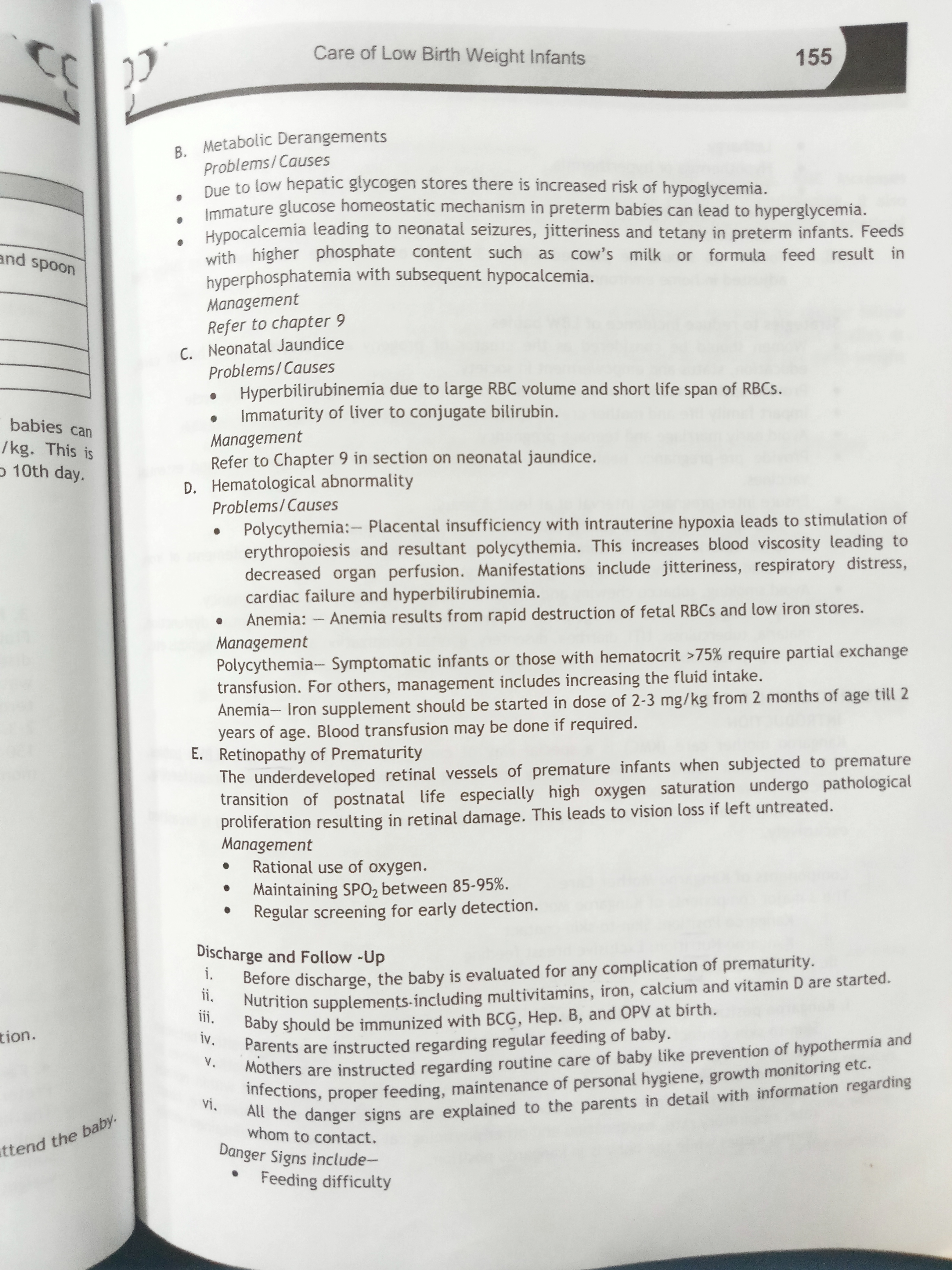What are the metabolic derangements, neonatal jaundice, hematological abnormalities, and retinopathy of prematurity in low birth weight infants?

Understand the Problem
The question involves understanding the topics related to the care of low birth weight infants, specifically focusing on metabolic derangements, neonatal jaundice, hematological abnormalities, and retinopathy of prematurity, along with their causes and management strategies.
Answer
Metabolic issues: hypoglycemia, hyperglycemia; jaundice: hyperbilirubinemia; hematological: polycythemia, anemia; retinopathy: poor retinal development.
Metabolic derangements in low birth weight infants include hypoglycemia, hyperglycemia, and hypocalcemia. Neonatal jaundice often results from hyperbilirubinemia. Hematological abnormalities can include polycythemia and anemia. Retinopathy of prematurity is common due to underdeveloped retinal vessels, especially with high oxygenation. Manage with oxygen control and screening.
Answer for screen readers
Metabolic derangements in low birth weight infants include hypoglycemia, hyperglycemia, and hypocalcemia. Neonatal jaundice often results from hyperbilirubinemia. Hematological abnormalities can include polycythemia and anemia. Retinopathy of prematurity is common due to underdeveloped retinal vessels, especially with high oxygenation. Manage with oxygen control and screening.
More Information
Low birth weight infants face numerous challenges due to their underdeveloped systems, requiring careful monitoring and management of glucose, calcium levels, and oxygen to prevent severe complications.
Tips
Be aware of the balance needed in glucose and oxygen levels, and the careful timing of interventions such as iron supplementation.
AI-generated content may contain errors. Please verify critical information